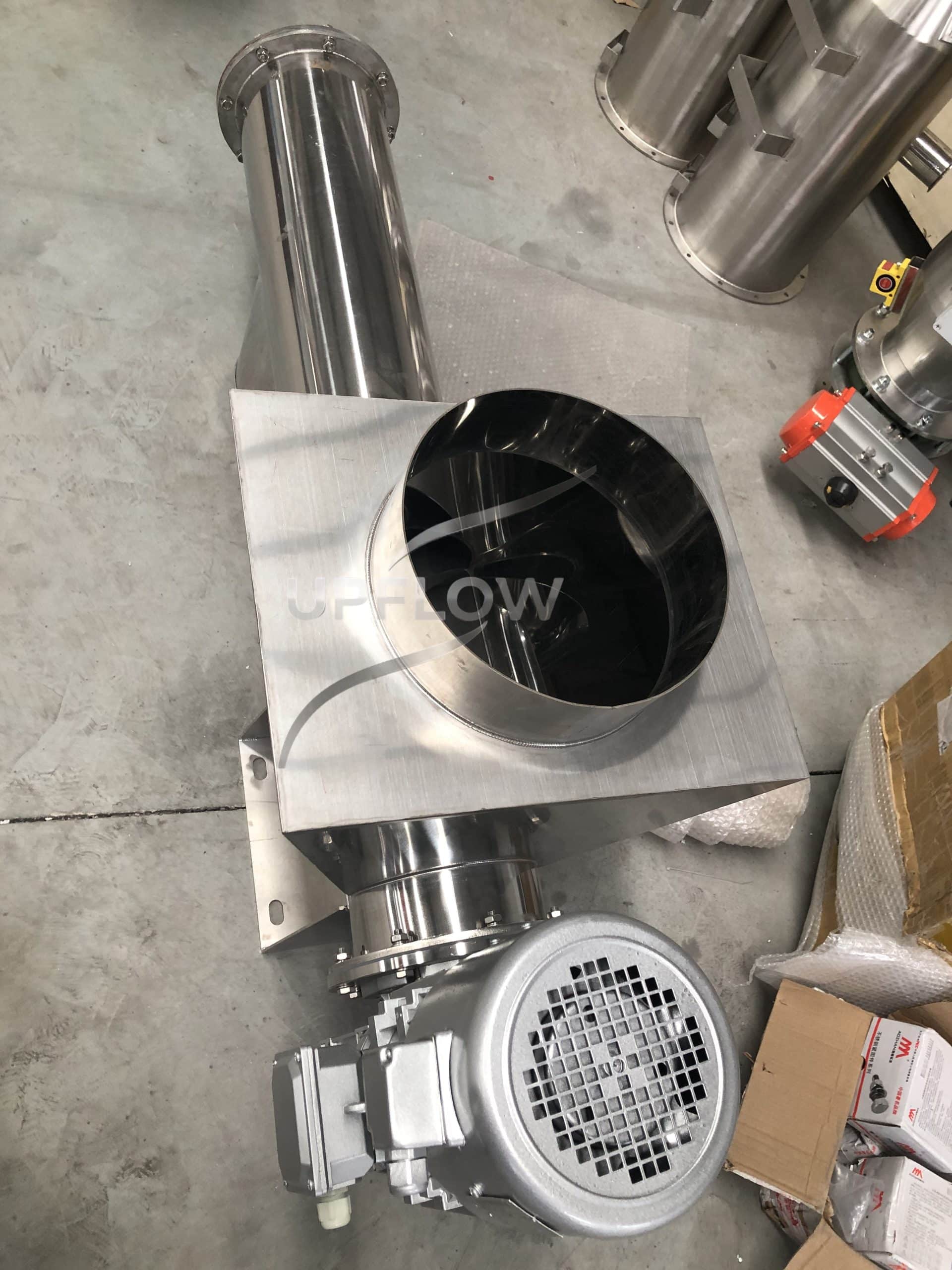
- admin
- Apr 24, 2025
- Screw Conveyor
Introduction to Screw Conveyors
Screw conveyors are widely used in industrial production for transporting powders, granules, and small bulk materials. Based on structural differences, they can be categorized into traditional screw conveyors (shafted) and shaftless screw conveyors.
Shaftless screw conveyors, designed without a central shaft, are particularly suitable for handling high-moisture, sticky, and fibrous materials such as sludge, waste, and chemical industry residues. This article will analyze the advantages and disadvantages of both types to help you choose the best conveying solution.
Features of Shaftless Screw Conveyor
Key Advantages
✅ No central shaft, ideal for sticky materials: Prevents blockages caused by material wrapping around the shaft.
✅ Higher conveying capacity: Handles wet, fibrous, and high-viscosity materials like sludge and food waste.
✅ Lower maintenance costs: Reduces bearing and bushing wear, extending service life.
✅ Fully enclosed design for environmental protection: Suitable for wastewater treatment plants and waste processing facilities.
Applications
Environmental Protection: Sludge treatment, waste transport
Food Processing: Food waste handling
Chemical Industry: High-viscosity chemical material transport
Pulp & Paper Industry: Pulp and waste paper transport

Features of Traditional Screw Conveyor
Key Advantages
✅ Ideal for dry, free-flowing materials: Such as cement, grains, and powders.
✅ Stable operation and high efficiency: Suitable for continuous and large-scale production lines.✅ Versatile conveying methods: Can transport materials horizontally, inclined, or vertically.
✅ Lower initial cost: Simpler structure with lower maintenance costs.
Applications
Grain Industry: Transporting grains and animal feed
Construction Materials: Cement, sand, and stone transport
Chemical Industry: Powder and granulated materials
Metallurgical Industry: Ore and coal powder transport

Comparison Table: Shaftless vs. Traditional Screw Conveyor
| Comparison | Shaftless Screw Conveyor | Traditional Screw Conveyor |
| Design | No central shaft | Central shaft present |
| Material Handling | High-moisture, sticky materials | Dry, free-flowing materials |
| Blockage Risk | Low | Higher, due to material wrapping |
| Maintenance | Easy, fewer wear parts | Requires regular lubrication |
For more detailed selection advice, feel free to contact us!
